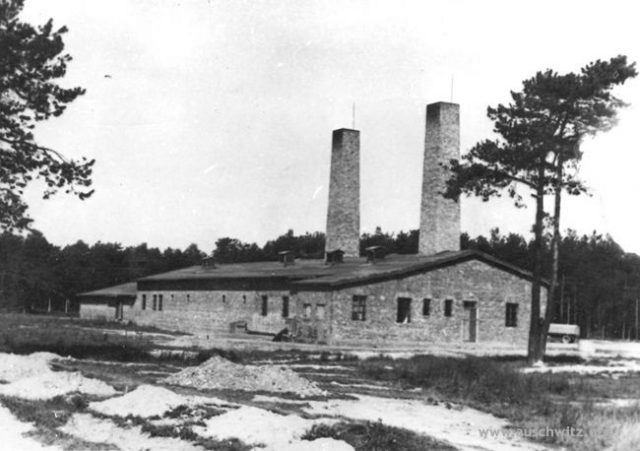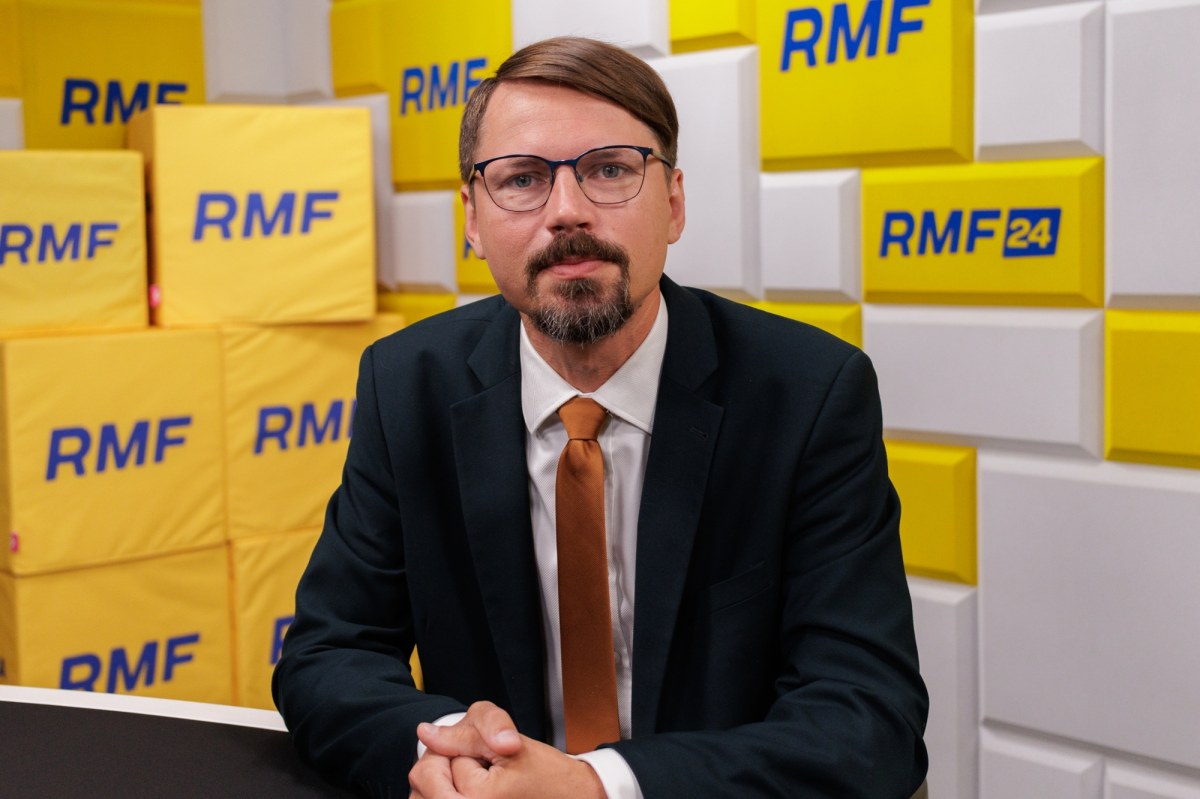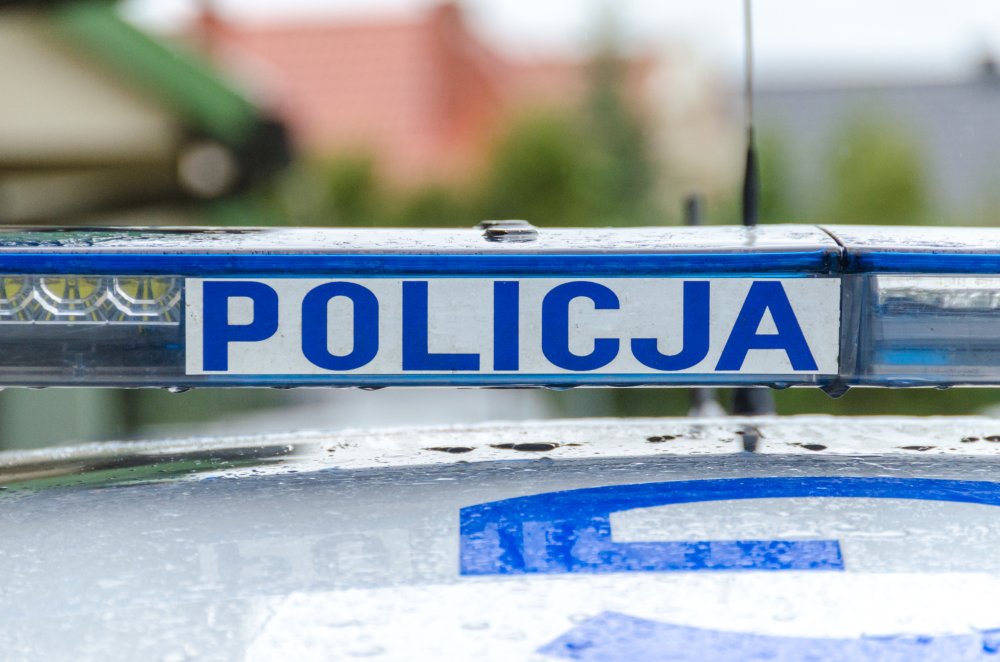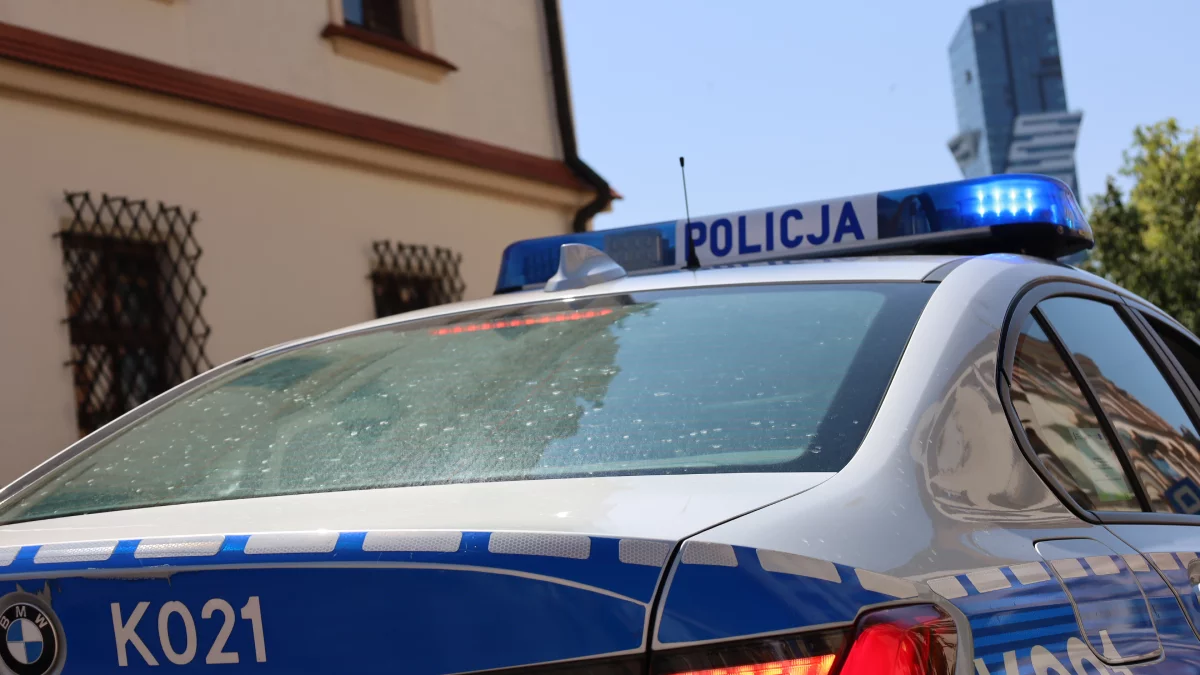Questioning the existence of gas chambers in Auschwitz-Birkenau should be considered reprehensible and is presently subject to law enforcement.
Nor can it be denied that German concentration camps located in the depths of the 3rd Reich in Germany and Austria were besides killed in gas chambers. The Hartheim Renaissance Castle (photo), located in Alkoven close Linz in advanced Austria, served from 1940 to 1944 as a center of extermination of people with disabilities and intellectual illness from the 3rd Reich and exhausted prisoners from concentration camps, imported from KL Dachau and KL Mauthausen, among whom were many Poles.
Sonnenstein Castle, located in Pirna close Dresden, besides played a akin role. Among another things, 575 Auschwitz prisoners were murdered there on 28 July 1941, most Poles gasping them in a bathhouse, into which carbon monoxide was allowed through the holes of the showers.
The 3rd Reich Killer School
Some doctors and SSmen who had experience in their genocide in the Hartheim Castle of Death, which is the “school of murderers” in the 3rd Reich, continued their criminal course in Bełżec, Sobibor and Treblinka. It belonged to them. Franz Stangl (1908-1971), later Chief Treblinka and Sobibor.
From May 1940 to December 1944, at least 30 1000 people were killed with carbon monoxide and their bodies were burned in a crematorium specially built for this intent in the castle, utilizing gold teeth to be torn from the victims and thus working to later exploit judaic victims in the 3rd Reich extermination camps.
Polish priests killed with gas in Hartheim Castle
Polish historians have long been known the exact surname list of 1 100 and twenty-five Poles along with their birth and residence places and dates of birth and death, who were deported from Dachau in 1942 in invalid transports and killed with gas in Hartheim Castle. A large percent of those imprisoned in Dachau were Polish priests, many of whom were killed in this castle. The name of 1 of them is worth reminding.
Fr.Dr. Antoni Ludwiczak, Born on 16 May 1878 in Kostrzyn Wielkopolski, in the interwar period he was an MP at the Legislative Sejm, manager of the Society of People's Readings and creator of the People's University of Dalki close Gniezna. He was imprisoned in Stutthof, Sachsenhausen and Dachau, among others. On 18 May 1942, he died in a gas chamber in Hartheim Castle. Farewelling his fellow prisoners in Dachau before his last trip, he said: “With God, boys! And don't forget that Poland must be in Odra. Don't cry, don't cry. Time to go, old man. You guys stay on. Don’t break down.”
A twelve years ago, German Roman Catholic theologian Manfred Wendel-Gilliar presented the results of his technological research, which shows that German Nazis in the gas chamber of Hartheim Castle murdered over 500 20 priests, most Poles.
Nazi euthanasia action
"Patients" were performed performing studies, during which even the crematorium was operated in medical kits. The extermination here was carried out in a akin way as in KL Auschwitz-Birkenau and another extermination camps. The difference was only that it was conducted in the historical interiors of the Renaissance castle, which was 1 of six "death establishments" in which the first gas chambers of the 3rd Reich functioned. They killed people as part of a Nazi euthanasia action.
In Hartheim, people from Germany and across Europe were killed: from healing facilities in Austria, confederate Germany and Slovenia, from Mauthausen and Dachau concentration camps, from conquered areas in the Balkans, from Poland, Czech Republic, Russia, France and Belgium, political prisoners and forced workers. fresh findings confirm that even russian prisoners of war were murdered here. Mutilated Wehrmacht soldiers were besides brought to Hartheim to die. They were not only cripples, but besides people who suffered permanent intellectual injuries at the front.
Measures to “finally resolve the judaic question”
As a consequence of the experience gained, Chief Hartheim, Rudolf Lonauer He felt that the most useful means to implement the “final solution to the judaic question” would be poison injections and gas. The action of killing in this way, in which he participated, became a model for the Holocaust. It was killing utilizing gas, for the first time on an industrial scale.
In mid-December 1944, erstwhile the killing operation in Hartheim Castle was halted, his commandant Rudolf Lonauer, he began a thorough demolition of papers that were evidence of the crime. For this reason, almost no of them behaved. In a short period of time, the first state, previously rebuilt interiors of the historical Hartheim castle, was besides brought into place. This work was addressed to Mauthausen prisoners who completed it on 23 January 1945.
After her performance, Commandant Rudolf Lonauer left for Linz to later decision with his household at the end of April 1945 to close Gaschwendt, where he began to reflect on the consequences of his actions. The consequence of these meditations was the decision to commit suicide, which he shortly committed by injecting himself with a lethal dose of poison. Before he did, a lethal injection had already applied to his wife and 2 daughters: six-year-old Rosemary and two-year-old Petra.
Uncharted Crime
Lonauer's deputy was Alzatczyk, Dr. Georg Renno, a gas-killing specialist who became celebrated for the fact that while killing victims in gas chambers and burning their bodies in a crematorium in Hartheim Castle, he practiced the classical pieces of Bach, Beethoven, Mozart and Telemann on a flute. After the war, he settled close Ludwigshafen in Germany. He's never been punished. He died in 1997.
On 5 May 1945, American soldiers seized Linz. The evidence collected by them made it even more clear to law enforcement authorities and the public that the mass murders committed in Hartheim Castle were an introduction to the genocide of Jews besides in the gas chambers of KL Auschwitz-Birkenau.
Three Parts of Auschwitz
The Auschwitz camp consisted of 3 parts: Auschwitz I (parent camp), Auschwitz II-Birkenau and Auschwitz III-Monowitz together with its respective twelve subcamps. More than 900 1000 Jews were killed in the gas chambers of Auschwitz-Birkenau, imported since spring 1942 by German Nazis from various occupied by III A Reich of European Countries until autumn 1944. This execution took place on an industrial scale.
On 3 September 1941, about 250 prisoners of Poles selected from the sick in the camp infirmary were placed in the basement of Block 11. Then about 600 russian prisoners were forced into the underground. The SS then poured in the crystals of cyclone B, from which the gas was secreted. The corpses of gassed russian prisoners were in uniform, in pockets there were, among others, documents, and household photographs, testifying to the accounts of erstwhile prisoners who undressed them from uniforms, that among them were besides Poles from Kres II of Poland, incarnate into the Red Army.
Temporary gas chamber
At the end of September 1941, the morgue in Auschwitz I was rebuilt at Crematorium No. 1 into a gas chamber. For this purpose, 4 entrances were struck into the ceiling through which the SS poured in the inside of the cyclone B granules. respective further groups of russian POWs were murdered in this makeshift chamber, as well as for the first time in tiny numbers of sick and exhausted Jews brought to demolition from forced labour camps in advanced Silesia. The gas chamber at Crematorium No. 1 in the Auschwitz I main camp was last utilized in December 1942, while the crematory furnaces themselves functioned until July 1943. Later Crematorium No. I was converted into an anti-aircraft shelter for the SS, tearing down its chimney and crematory furnaces, which were partially reconstructed with the chimney after the war.
‘Red cottage’
In the spring of 1942, the reconstruction into the gas chamber of a home outside the camp in Birkenau, where the previously displaced Polish household lived. In March 1942 the Germans launched the first camouflaged gas chamber here, which was called bunker No. 1. From 1942 to 1943, tens of thousands of Jews were murdered there – utilizing cyclone B. The gas bodies were buried close the crime scene. They were later dug and burned, in specially prepared pits. As a place to kill bunker No. 1, besides called the "Red House" from the colour of its walls, it functioned until April 1943. Later this “house” was demolished. In order to hide the traces of the crime, next to the pit, the burning pit was buried and the area was neutralized.
‘White cottage’
In mid-1942 in Birkenau, besides outside the camp fence, the second home of 1 of the Poles expelled from there was adapted to the gas chamber. The selected facility was respective 100 metres from bunker 1 and was called bunker No. 2 or from the colours of its walls "White cottage". It was launched in July 1942 and immobilized besides in spring 1943. As with the victims of bunker 1, the “White House” was re-used in the spring of 1944 during the period of mass extermination of Hungarian Jews. On 9 August 1942, Edith Stein (the spiritual name of Teresa Benedict from the Cross) and her sister Rosa died in it.

Four large gas chambers and crematoria
In 1942, the construction of 4 large gas chambers and crematoria began in Birkenau, which was commissioned from March to June 1943. Initially, the selection of judaic transports took place on the freight ramp in Oświęcim, the alleged Judenrampe. A railway ramp was later commissioned in May 1944 inside the camp in Birkenau. Gas chambers at Crematoriums II and III, as well as stripping, were located underground, while in Crematoriums IV and V on the surface.
In the letter of the Central Building Board of Auschwitz dated 28 June 1943, we can read that in all 5 crematoria in Auschwitz-Birkenau, 4756 corpses could be burned within 24 hours, while the crematoria in Birkenau alone could burn 4416 corpses in 24 days – after 1440 in crematoria No. II and III, and after 768 in crematoria No. IV and V.
According to judaic prisoners employed in Sonderkommando in the burning of bodies, the regular capacity of 4 crematoria in Birkenau was actually to be higher and was about 8,000 bodies.
Killing in gas chambers of another nationalities
Immediate demolition in gas chambers immediately after arrival in Birkenau, without registration number, was mostly only subject to Jews considered unfit and unfit during the selection. In addition to the Jews, a number of russian prisoners of war were killed in gas chambers, as has already been mentioned, estimated within respective 1000 people. At least respective 1000 Poles were killed in gas chambers. There are known examples of killing them in gas chambers after being selected as sick in the camp hospital, as well as 320 people killed after the penal rebellion of the company in Birkenau on 10 June 1942, or sentenced as police prisoners to death by an ad hoc court in block 11. respective 1000 Roma and Sinti were besides killed in the Birkenau gas chambers.
Covering up crime scenes
The first makeshift gas chamber, the alleged bunker No. 1, was demolished in 1943, while the second, called bunker No. 2, reopened in the spring of 1944, was demolished only in the fall of 1944. At the same time, Crematoriums No. II and III with gas chambers were besides dismantled in Birkenau, after which they were blown up in January 1945. Crematorium IV was partially burned on October 7, 1944 during the revolt of the Jews from Sonderkommando and later besides undressed. In turn, the last Crematorium No. V functioned to the very end and was blown up on the eve of the liberation of the camp – 26 January 1945. To this day, their ruins are preserved at the Auschwitz-Birkenau Memorial.
After the war, many technological studies were created about the gas chambers in Auschwitz-Birkenau, in which this issue was extensively discussed in a five-volume monograph entitled "Auschwitz 1940-1945. Node issues from the past of the camp” (under Wacław Długoborski and Franciszek Piper). This subject was besides presented in many memories of erstwhile prisoners, e.g. Sewerina Szmaglevska ‘Dies over Birkenau’ or Sophia Kossak Szczucka “From the abyss”, issued shortly after the war, and in many accounts of witnesses, which are available in the Auschwitz-Birkenau Museum Archives. A witness in this case is besides written after the war the memories of erstwhile SS, as published in the publication "Auschwitz in the eyes of the SS", as well as the camp documents, photographs and plans of crematoria and aerial photographs taken by Allied airmen in 1944.
Auschwitz exile Reports
During the time of the existence of KL Auschwitz, the first origin of the concentration camp and its gas chambers were reports of Polish refugees and prisoners released from the camp, submitted orally or written by them after leaving the camp and then transferred to the management of the Polish Underground State. For example, in May 1942, Stefan Bielecki provided the Home Office with information on this subject provided by Witold Pilecki, leader of the camp's underground military organization. A period later, the next akin information was sent by another fugitive Stanisław Jaster.
In April 1943, they escaped from Auschwitz. Witold Pilecki, Jan Redzej and Edward Ciesielski. All 3 of them produced reports independently of each other, which were forwarded to the Home Army. In his postwar memoirs on the subject, Ciesielski wrote: “Despite these activities resulting from the service in the local AK organization, all 3 of us worked diligently on detailed reports on the Auschwitz camp. These reports were sent to Warsaw. Here they were translated into German, English and French. They would then be transferred abroad to alert and alert the public of the planet about Nazi crimes committed in Auschwitz.
In November 1943, the exile from the Polish camp did likewise Jerzy Tabeau, which described events in the camp from spring 1942 to autumn 1943. His report, known as the “Polish Major Report”, was forwarded to the leadership of the Polish Underground and sent to Switzerland. In April 1944 2 Jews from Slovakia escaped from Auschwitz Concentration Camp – Rudolf Vrba (in the Walter Rosenberg camp) and Alfred Wetzler. Based on their accounts, a comprehensive study was produced in Slovak and German, mainly describing events in Auschwitz from April 1942 to April 1944, which were then sent to the governments of the Allied States, the planet legislature of Jews, the global Red Cross and Vatican.
At the end of May 1944, 2 more Jews from Poland fled the camp Czesław Mordowicz and Slovakia Arnošt Rosinwho reported on the extermination of Jews from Hungary in the Birkenau gas chambers, later passed to the West. A brochure was published in Washington in November 1944. German Extermination Camps – Auschwitz and Birkenau. It consisted of 2 parts. The first included the lyrics of Vrby and Wetzler and the study of Mordowicz and Rosin, while the second included the study of Jerzy Tabeau.
There was besides a request for bombing of gas chambers and crematoria in Birkenau and railway lines leading to this camp. However, these appels proved to be ineffective. The U.S. Department of War and the British Ministry of Aviation were of the opinion that only as shortly as possible the triumph of the Allies over the 3rd Reich could put an end to the demolition of Jews in gas chambers and that all available resources should be given to them, without being distracted by another non-military activities.
Dr. Adam Cyra
The author is simply a retired worker of the Auschwitz-Birkenau State Museum, author of many works, including the best biography of Witold Pilecki. He is simply a permanent publicist of “Polish Thought”,
Photo: Wikipedia
Think Poland, No. 33-34 (17-24.08.2025)













